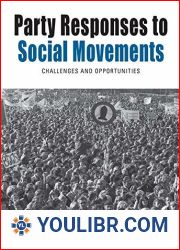
BOOKS - MILITARY HISTORY - Counterterrorism and the State Western Responses to 9/11


US $8.49

450152

450152
Counterterrorism and the State Western Responses to 9/11
Author: Hellmuth Dorle
Year: 2016
Number of pages: 392
Format: PDF
File size: 1,71 MB
Language: ENG
Year: 2016
Number of pages: 392
Format: PDF
File size: 1,71 MB
Language: ENG
This excellent and well-written study is the first that analyzes and compares structural restraints on counterterrorism responses in the U.S., Germany, Great Britain and France. For students of national security, comparative politics and public policy this is a must read on how different governmental structures set the parameters for the political debate on counterterrorism. Dorle Hellmuth argues that the nature of state responses to terrorism is shaped by the particular governmental framework and process within which counterterrorism measures are decided. Using four Western democracies as case studies, Hellmuth measures effects of government structures on counterterrorism decision-making processes and outcomes. In doing so, she examines how similar or different the responses have been in four parliamentary and presidential systems, and clears up common misperceptions about domestic counterterrorism efforts on both sides of the Atlantic. Each of Hellmuth's four case studies reviews the official constitutional powers and informal relationships between executive and legislative branches, outlines decision-making processes leading to counterterrorism policies and reforms since 911, and summarizes how structural factors influenced those processes. By measuring and comparing structural effects, and by going beyond the common U.S. and British focus to include counterterrorism decision-making in Germany and France, Hellmuth shows that there are important similarities between those governments designed to constrain executive power (Germany and the United States) and those that facilitate executive power (France and Great Britain). Her analysis further demonstrates that in presidential systems executive and legislative branches have incentives to produce a steady stream of reforms, that presidents have more opportunities than leaders of parliamentary systems to expand their unilateral powers during times of crisis, and that choices designed to strengthen presidential positions influence the direction, nature, and scope of institutional reform.














































